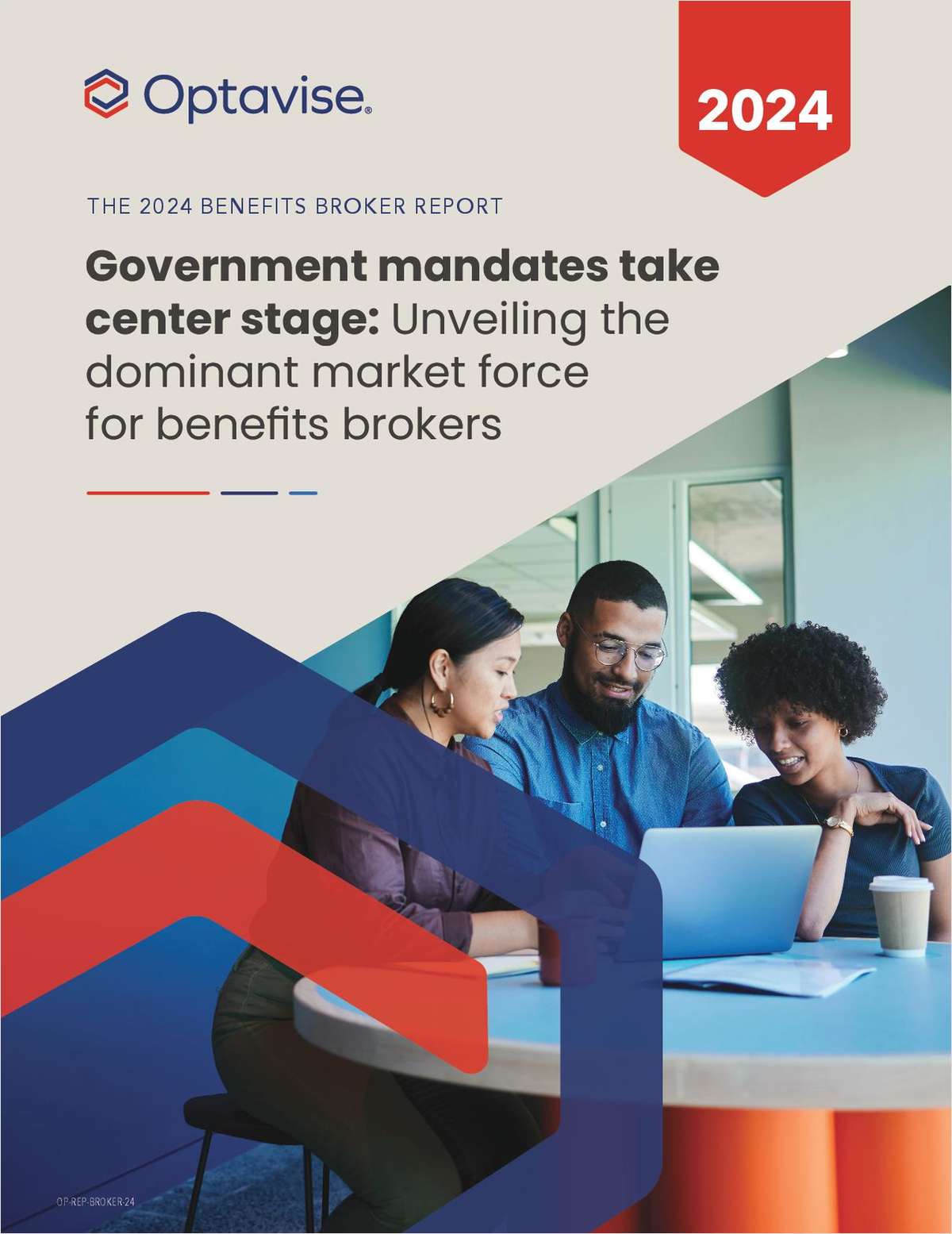To many, the phrase “consumer-driven health care” is another wayof saying “higher deductibles and co-pays.” Make it more expensiveto access medical care, the logic goes, and employees will thinkharder about whether that doctor’s visit is really necessary.
|Bart Halling, vice president for consumer-driven and emergingmarkets for UMR, the third-party administrator unit of UnitedHealthCare, thinks differently about consumer-driven medicine. It’sstill his job to persuade employees to think carefully about themoney they spend on health care. His methods, however, don’t alwaysinvolve making it harder to go to the doctor.
|Instead, Halling and his group encourage employees to connecthealth strategies to corporate strategies. He hopes workers willremember that personal health affects financial health—and that thehealth care they don’t use is the least expensive health care ofall.
|At UMR, Halling is responsible for developing and implementingthe company’s consumer-directed health and emerging marketsproducts and services. His background is as much in finance as inhealth care administration. A graduate of St. Olaf College inNorthfield, Minn., Halling began his career at Wells Fargo, wherehe learned the nuts and bolts of financial transactions.
|He took what he had learned about transactions at Wells Fargoand moved to Definity Health in 2000. “This was a chance to be partof a disruptive business model and make health care moreefficient,” he says, noting that financial transactions typicallycarry a 1.5 percent transaction cost, while health caretransactions cost 24 percent. United HealthCare bought Definity in2004; eighteen months later, Halling left for FiServ Health.
||He headed that firm’s health care arm until 2008, when UnitedHealthCare bought that company, too. “Friends called and said, hey,could you tell me where you’re going next? Because we know thatUnited HealthCare will eventually buy them,” Halling says. NowHalling focuses on helping employers “who want to change the waytheir employees think about health care,” he says.
|All of his group’s current clients are companies who self-fundhealth care, and who “are looking for a behavior change that hasfolks realizing the intrinsic value of being healthier,” Hallingsays. A healthier employee group requires healthier individuals,and not every employee welcomes an employer’s interest in workers’weight, blood pressure or other health metrics.
|“We did an incentive study last fall, asking employees whatmotivates them to behave differently around their health. Someemployees said that they’re already healthy and don’t need help.Others were offended that the employer wants to take theirbiometrics,” Halling says. To overcome that resistance, Halling’sgroup begins by offering clients and their employees informationand education.
|Follow-up programs encourage healthy lifestyles, and creativeincentives bolster participation. Because of its connection withUnited HealthCare, UMR can provide clients some proprietaryinformation as part of its educational offerings. Mostconsumer-oriented health care plans, for instance, ask consumers tochoose doctors who offer superior service at a competitiveprice.
|But few doctors—and fewer hospitals—can tell patients what aproduct or service will actually cost, and it can be nearlyimpossible for a patient to meaningfully compare one doctor’ssuccess rates with those of another practitioner. “It’s toughtrying to create customers in a marketplace that doesn’t have thesame kind of data they’re used to in other situations,” Hallingsays. “It’s like buying groceries and hearing what they cost 45days after you ate them.”
||United HealthCare’s data set, with its enormous, multi-yearclaims history, can shine the necessary spotlight on medical costsand outcomes. “It gives us the ability to start ranking providersfor using evidence-based medicine and for cost-efficiency inoutcomes,” Halling says. The group can then begin encouragingemployees to use practitioners and facilities that offer the bestvalue for money.
|UMR’s client employees also get a dose of education, often inthe form of FlashMedia presentations, about the actual cost ofhealth care interventions—and the practices that can helpindividuals make interventions unnecessary. A company might sendworkers information on managing common health conditions, such astype two diabetes, depression or back problems, emphasizing thelarge number of people affected by each complaint.
|“A lot of these concerns can make people feel very isolated,”Halling says. “Creating assurance that they’re not alone in ahealth concern can help them move forward.” That forward movementmight take place in the group settings of UMR-designed programsthat encourage employees to adopt healthier lifestyles.
|These could include Biggest Loser-style contests to see whichwork group can lose the most total weight, on-site vaccinations,coaching programs that pair a professional with workers who sharesimilar concerns, Weight Watcher meetings on company time orold-fashioned company softball games.
|It’s one thing to offer education and programs, of course, andanother thing to persuade workers to put those opportunities touse. For most firms, positive incentives do the job. “I’m seeingmore employers using carrots than sticks,” Halling says. To choosethe right carrots, he adds, “a company needs to understand thecurrency that really elicits a response for that population.”
|Financial rewards are always popular, but firms have also hadsuccess by offering health savings account deposits, preferentialparking spots, gift cards to stores that employees frequent, lunchwith senior management, time off, or the chance to help designfuture company-wide health initiatives.
||Client companies are also working to connect benefits strategiesto corporate strategies in employees’ minds, Halling says. Oneclient company builds boats, he says. It challenged workers to findways that the company could do things more efficiently. The winninggroup showed that, by spending $12,000 on better lighting, it couldsave nearly $124,000 in production costs.
|From there, Halling says, it’s no great leap to the idea thatevery dollar a company doesn’t spend on health care is one moredollar that it can spend on better lighting, a new product line ora pay raise for workers. As workers understand that what a companydoes today affects its future, they can also connect with the factthat health behaviors now have future consequences, both positiveand negative.
|“I’d like to see us model for health care like we model forfinances—like we explain how long it will take to pay off a creditcard bill, for instance. What happens if you decide to “pay” alittle more than the minimum on your health?” Halling asks. At aminimum, consumers who understand that often become more savvyconsumers, Halling said.
|One of UMR’s clients reported an example in the story of anemployee, a young man who fell while playing Frisbee and cut hisarm on a sprinkler head. “The cut required stitches, so the doctoropened up a suture kit, used the necessary materials, and began tothrow the rest of the kit in the garbage. ‘Um, Doc, I think I justbought that whole kit,’ the patient said. ‘Could I have it,please?’
|He took it home and outfitted his medicine cabinet with thegauze and bandages,” Halling says. At maximum, Halling says, theright kind of consumer-directed medicine could have a profoundlypositive impact on the American health care delivery system. “Atfirst, consumer-directed health care was a chance for employers topush back expenses onto employees.
|That’s not a long-term solution,” Halling says. “But to me,there is a shining beacon of light in trying to get folks moreengaged in managing their health care. If I can get more active inmanaging my health and understanding that it will affect myfinancial bottom line, wouldn’t it be great to have 300 million ofus out there actively doing this? That would change the trajectoryof the $4 trillion we’re spending on health care.”
Complete your profile to continue reading and get FREE access to BenefitsPRO, part of your ALM digital membership.
Your access to unlimited BenefitsPRO content isn’t changing.
Once you are an ALM digital member, you’ll receive:
- Critical BenefitsPRO information including cutting edge post-reform success strategies, access to educational webcasts and videos, resources from industry leaders, and informative Newsletters.
- Exclusive discounts on ALM, BenefitsPRO magazine and BenefitsPRO.com events
- Access to other award-winning ALM websites including ThinkAdvisor.com and Law.com
Already have an account? Sign In
© 2024 ALM Global, LLC, All Rights Reserved. Request academic re-use from www.copyright.com. All other uses, submit a request to [email protected]. For more information visit Asset & Logo Licensing.








